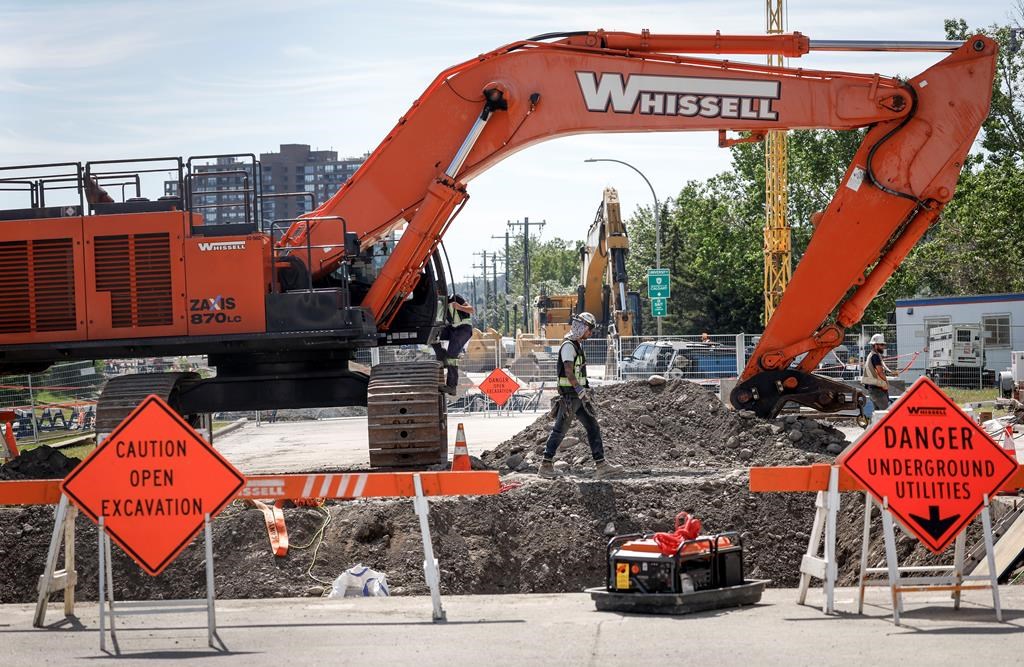The condition of infrastructure across the country is dire and action needs to be taken now to prevent the kind of massive water pipe break that continues to plague Alberta’s biggest city, says the president of the Federation of Canadian Municipalities.

Geoff Stewart was in Calgary as part of the federation’s annual general meeting in June when the break occurred, leading to months of water restrictions and other onerous measures.
Montrealers woke to their own infrastructure failure Friday when a break in a major underground water main near the Jacques Cartier Bridge unleashed what nearby residents described as a “wall of water.” Streets and homes were deluged, forcing the evacuation of nearby buildings and leading to a boil-water advisory for 150,000 homes.
“Infrastructure across this country is in dire need of upgrades and work done,” said Stewart.
“Our infrastructure is aging across this country. It’s getting to a crisis where we’re going to have to do some very extensive work on infrastructure from one end to another.”
Most restrictions in Calgary had been lifted earlier this month when Mayor Jyoti Gondek announced an analysis had found more trouble spots along 10 kilometres of pipe in northwest Calgary.
The line is to be shut down starting Aug. 26 until late September so it can be dug up and reinforced with concrete in those areas. Water restrictions are making a comeback, including a ban on watering lawns and a request for shorter showers and fewer laundry loads.

Get daily National news
Stewart’s group has released a report that aims to make the case for a “municipal growth framework” that would change federal and provincial funding formulas so municipalities have more money to work with.
- As repairs wrap up on Bearspaw feeder main, no guarantee another rupture won’t happen
- ‘Not out of the woods yet’: Calgarians asked to continue conserving water
- Construction begins on mitigation measures for potential Bearspaw feeder main break
- Calgary-area woman’s stolen ashes returned to her family
He said Ottawa and the provinces have the ability to raise more revenue through income tax or sales tax hikes.
“Municipalities have a bigger burden and very little or no increases in our revenue without property tax,” he said.
“When it comes to tax dollars, less than eight to 10 cents of every dollar collected goes to municipalities. The time is now. We’re at a critical point with infrastructure in this country and we’ve got to have that conversation.”
An engineering professor said the failure of the pipe in Calgary was probably a harbinger of what other cities across Canada, especially those in cold areas, could face in the foreseeable future.
She said it’s been a wake-up call for Canada.
“It’s one of those moments that unfortunately, out of tragedy, other jurisdictions have some lessons to learn,” said Tricia Stadnyk, a professor at the University of Calgary’s Schulich School of Engineering.
“The best we can do now is learn from this catastrophe, the hope that maybe we are the canary in the coal mine and we can avoid this happening to other places.”
A 2020 report from Canada’s Core Public Infrastructure Survey found close to one in five kilometres of water, sewer and stormwater pipes — 86,000 out of more than 472,000 — were reaching the end of their useful life, having been built before 1970.
The average expected useful life of new underground pipes installed in 2020 ranged from 50 to 73 years
Stadnyk said the pipe in Calgary was nearly 50 years old and that’s the point when some kind of catastrophic failure can happen.
She said Calgary is also more vulnerable because of its climate, as winter weather can swing wildly from frigid cold snaps to balmy chinooks and put pressure on pipes.
Stadnyk doesn’t think the failure in Calgary was sudden and said there likely were signs there was a problem.
One problem has been the failure of steel tensioned reinforcing wires that wrap around the pipe.
“Because (the line is) buried, it’s very hard to access. They had installed an acoustic monitoring system on this pipe, which is the state of knowledge right now in pipeline infrastructure for water,” she said.
“But unfortunately, those acoustic monitors seem to have not picked up those wire snaps.”
Michael Thompson, the city’s general manager for infrastructure services, said the city has been using acoustic monitoring devices installed last spring.
That system is being upgraded to a fibre optic system starting this week, he said.
“This will accurately identify the location of a wire snap and allow us to monitor the pipe’s health more closely.”







Comments